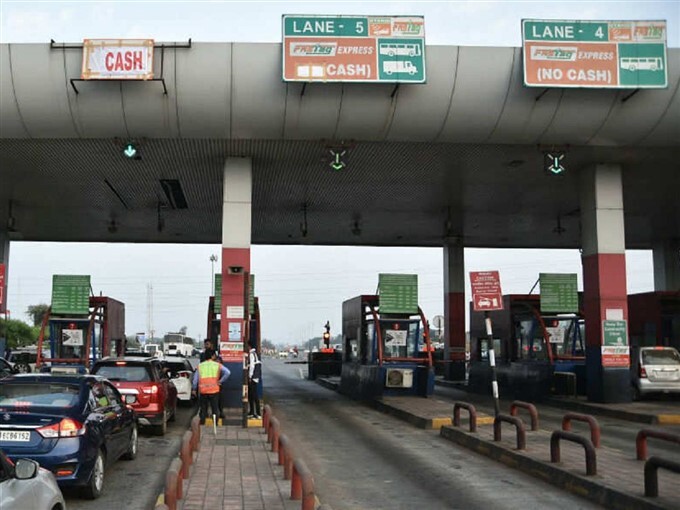(Today, the major challenges facing India’s toll system are congestion and delays. Despite introducing the Fastag system, long queues and delays at toll plazas remain a major problem. Technical glitches and low use of digital payment methods in some areas further aggravate this problem. For example, constant traffic jams at toll plazas. High operating costs include the cost of operating and maintaining toll plazas, which includes staff salaries, infrastructure maintenance, and use of technology, increasing the financial burden, and reducing the overall efficiency of the system.)
India’s toll road network is set to expand to 45,428 km in 2023, a 75% increase from 25,996 km in 2019. Despite this expansion, challenges remain, as recent data shows delays in toll collection, which contribute to traffic congestion. Addressing these challenges is essential to increase road travel efficiency and revenue collection, which requires analysis of current measures and additional solutions. The major challenges facing India’s toll system today are congestion and delays. Despite the introduction of the FASTag system, long queues and delays at toll plazas remain a major problem. Technical glitches and low adoption of digital payment methods in some areas exacerbate this problem—for example, constant traffic jams at toll plazas.
High operational costs The cost of operating and maintaining toll plazas, including staff salaries, infrastructure maintenance, and use of technology, increases the financial burden, reducing the overall efficiency of the system. Anomalies in toll data (such as data manipulation and huge differences between reported and actual traffic) have been revealed, such as on the Pune Expressway. Disparities in toll rates, variations in toll rates across different sectors and stretches of highways, and inconsistent pricing based on vehicle types lead to confusion and discontent among commuters. The lack of transparency and clear rationale for toll pricing adds to public discontent. Lack of infrastructure integration Many toll roads are not integrated with the national road network or urban transport systems, leading to inefficiencies.

Government initiatives launched to address challenges of India’s toll system include the National Electronic Toll Collection System through FASTag implementation, promoting cashless transactions and reducing congestion at toll plazas by using technology for automatic toll fee deduction, and is now mandatory for all vehicles. The One Nation, One FASTag initiative standardized toll collection across the country, ensuring the interoperability of FASTags at all toll plazas regardless of the highway operator or state, providing a seamless experience to commuters and reducing confusion over toll charges.
The government is testing GPS-based toll collection systems to address problems such as congestion at toll plazas and ensure vehicle tracking for distance-based toll collection, which will reduce the need for physical toll booths. The government has installed CCTV systems at toll plazas to monitor traffic and prevent toll evasion. Hybrid lanes accepting both FASTag and cash payments have also been introduced to ensure smooth traffic flow, especially in areas where FASTag usage is low. Public-private partnership models have been introduced in toll road development to involve private partners, enhance the quality of infrastructure, improve service delivery, and ensure better maintenance of toll plazas.
India’s toll system is in dire need of further streamlining measures. Accelerating the adoption of GPS-based toll collection, which charges based on the distance traveled, can eliminate physical toll plazas, reduce congestion and revenue leakages, and ensure a more efficient, transparent system. Better data integration and analytics can leverage data analytics and real-time monitoring at toll plazas to predict congestion, detect toll evasion, and optimize traffic flow while integrating toll data with broader traffic management systems improves road infrastructure management.
A dynamic pricing model that adjusts toll rates based on traffic volume and time of day can help manage congestion during peak hours, encourage more efficient road use, and reduce bottlenecks. The government can curb toll evasion by increasing surveillance with automatic number plate recognition systems and imposing stringent penalties, improving compliance, and increasing revenue collection. Developing alternative routes for local commuters and expanding toll-free roads can reduce public opposition to tolls while offering lower rates for eco-friendly vehicles will promote sustainable transport.
Although government initiatives have improved efficiency, issues such as congestion and theft require more robust solutions. Adoption of advanced technologies such as GPS-based tolling and dynamic pricing along with strict enforcement of these can improve the toll system. Implementation of these measures will ensure a more streamlined, effective, and fair tolling experience for all users.






